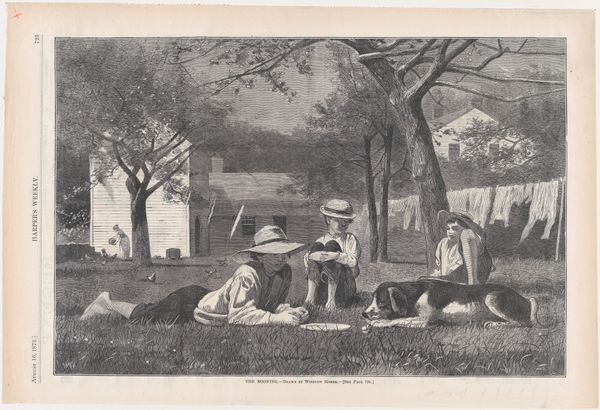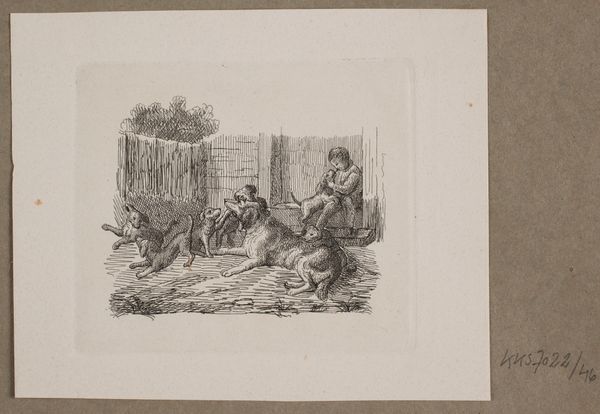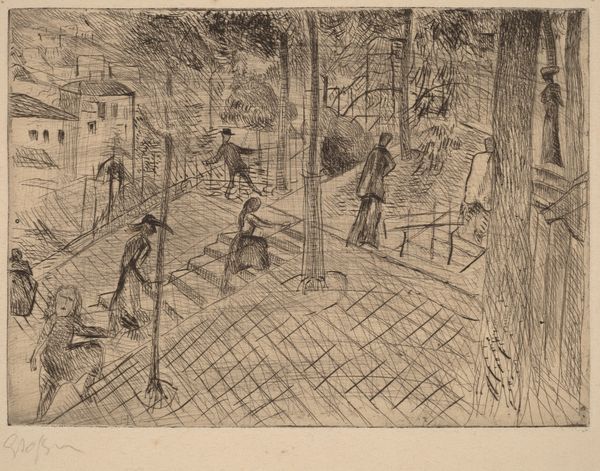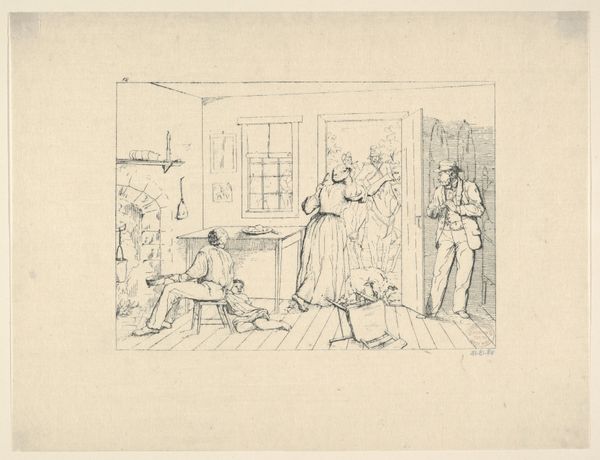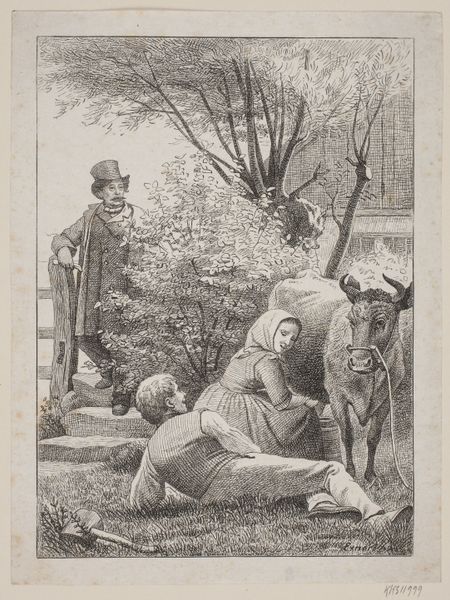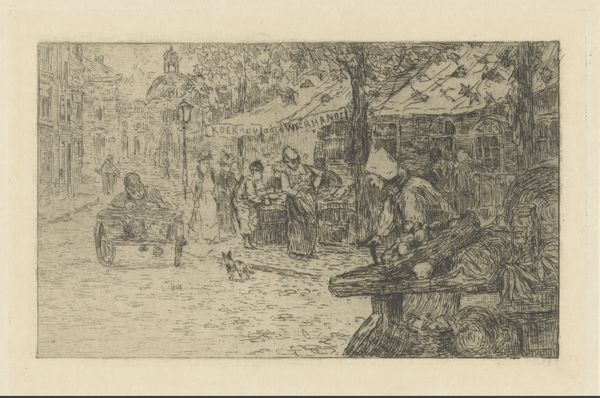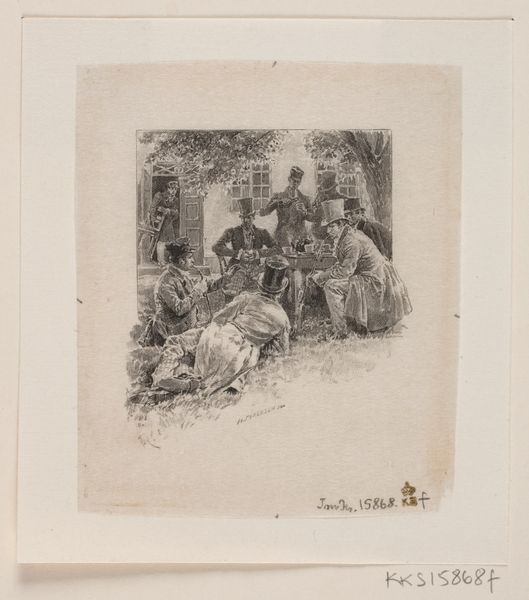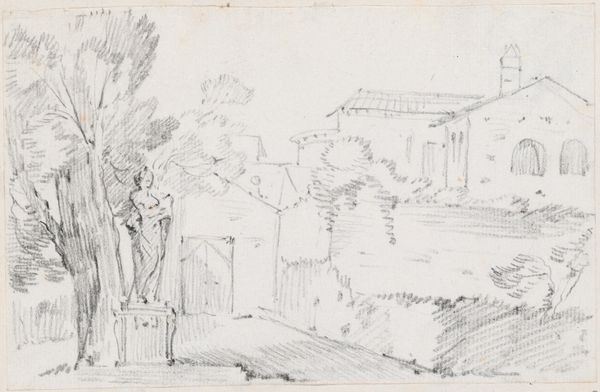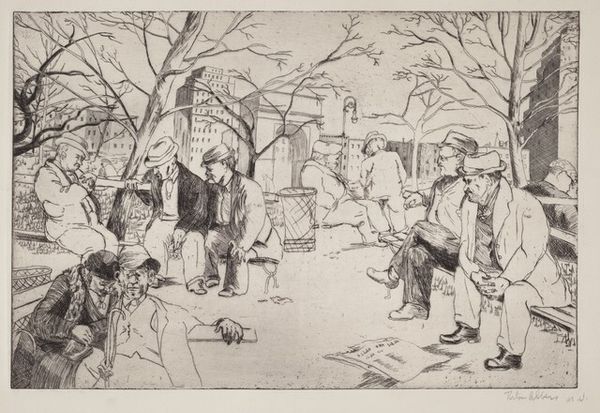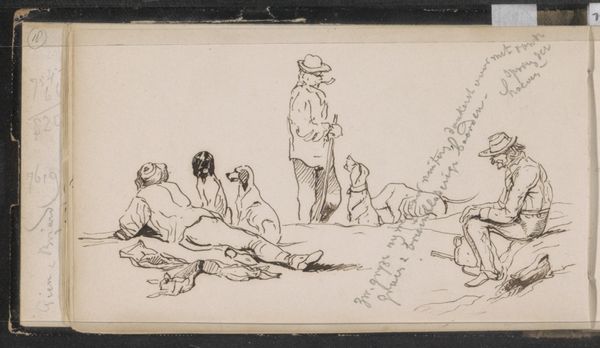
drawing, ink, pencil
#
drawing
#
narrative-art
#
figuration
#
ink
#
pencil
#
line
#
genre-painting
#
academic-art
#
realism
Dimensions: height 261 mm, width 340 mm
Copyright: Rijks Museum: Open Domain
Curator: Well, this looks chaotic! There's a sense of immediate drama in the scene with the turned-over carriage and the figures scrambling away. Editor: Indeed! We have here a drawing, made with pencil and ink, by Gijsbertus Johannes van Overbeek, sometime between 1892 and 1947. The work is titled "Jongen en meisje vallen uit een wagen," which translates to "Boy and Girl Falling from a Wagon." Quite literal, isn't it? Curator: More than literal – the wagon being pulled by a goat suggests it's playing on a symbolic level. Goats are, well, goaty! Editor: Absolutely. In various traditions, goats represent stubbornness, capriciousness, and even a kind of rebellious energy. Perhaps Overbeek is using the goat as a visual metaphor for uncontrolled childhood, a sort of barely tamed innocence leading to accidents. Look at the figures fleeing—are they fearfully amused? Mortified by embarrassment? Curator: From a social history angle, I’m drawn to the setting. The middle-class home, with the imposing gate, shows a society where order and control are important, and the genre-scene setup feels very deliberate. Is this an imagined story about reckless youth endangering domestic tranquility? Or is Overbeek trying to suggest social chaos lurks beneath the surface of bourgeois life? Editor: Possibly both. Visually, the composition funnels your eye from the fallen children toward the running adults. This almost cartoonish chase, this lack of composure, suggests something unexpected has disrupted their routines. We see similar frantic chases visualized in earlier Baroque allegories of vice. Curator: So you see continuity even as the style nods toward Realism? Editor: Yes, though the slightly academic drawing style also reflects the period. This piece participates in a longer dialogue, re-employing recognized visual themes to convey an instantly understandable moral lesson for a popular audience. The goat isn't just pulling a cart—it's embodying human impulsiveness. Curator: Looking at it now, you’ve highlighted the art-historical implications of these seemingly simple motifs. My initial reaction to chaos transforms into an awareness of how deliberate the work truly is. Editor: Precisely. I started out just seeing what any viewer might see, and now I’m remembering that this work, on second inspection, has symbolic connections to so many different past artworks.
Comments
No comments
Be the first to comment and join the conversation on the ultimate creative platform.

